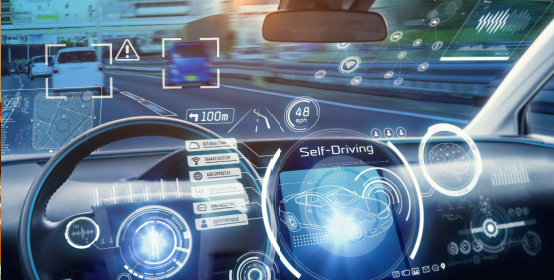
Sci-fi authors and theorists promised autonomous cars half a century ago. About ten years ago, it was almost common knowledge that we'd all be in self-driving cars today. Even just a few years ago, there was a lot of buzz about autonomous driving technology. If you've got questions about the state of the industry today, however, you're not alone. Supporters of self-driving cars underestimated exactly what it took to put a completely autonomous vehicle on the road, and some of those dreams of autonomous vehicle tech came to a halt.
Fortunately, after some setbacks, automotive manufacturers and innovators have developed actual self-driving cars. Here's what you need to know:
For many, the idea of a self-driving car means that it operates without input from a human driver. While this isn't exactly false, there's more to it than that. Cars aren't either automated or not, there's a range.
The Society of Automotive Engineers actually recognizes six levels of automation, ranging from 0 to 5, based on how much monitoring and input are required from drivers. The first three requires a driver to monitor automated features in order to do things like speed up, slow down, or brake in an emergency. The next one doesn't require driver input, unless a specific feature requests it. The last two don't require driver input at all.
Keeping this in mind makes it a bit easier to understand some of the advances and technical hurdles faced by self-driving technology, as well as where the industry is today.
Apple is one of the companies who was hit by technological roadblocks to full automation. The company was working on a fully autonomous vehicle that was originally intended to have no pedals or steering wheel at all. They've since walked this back to a more achievable goal: a less expensive, more conventional car with some advanced self-driving features.
The company has recently improved its self-driving tech and begun a new phase of testing. This new system relies on LiDAR, a light-based technology that otherwise operates similarly to radar. This vehicle is expected to launch sometime in 2026.
Tesla, one of the pioneers of self-driving tech, offered what was effectively a test version of a fully automated driving system. This came with a waiver that stated that buyers acknowledged that they were purchasing a beta version and assumed all risks associated with this.
In February, 2023, the National Highway Traffic Safety Administration said that software that allowed a vehicle to exceed the speed limit or pass through intersections wasn't safe, and actually increased the risk of accidents. As a result, Tesla wound up recalling over 350,000 vehicles for software updates.
Later this year, Mercedes will begin selling cars equipped with its Drive Pilot system.
This is considered a level 3 automated system. This means that it doesn't require driver input and is capable of operating under specific conditions, but requires a driver to take over when prompted. This system is designed to operate in highway traffic, at less than 40 miles per hour. Under these conditions, Mercedes considers the system capable of handling things on its own. If the situation changes, the system requires the driver to resume operating the vehicle.
This puts Mercedes ahead of General Motors' Super Cruise or Tesla's Autopilot, which are level 2 systems. This means that they require constant monitoring by the driver of the vehicle.
Mercedes' system, like Apple's, relies on LiDAR. It also employs wheel sensors that check for wet conditions, microphones to listen for emergency vehicles, and cameras.
Are fully automated vehicles an achievable goal? It's definitely possible. New advances are being made all of the time, particularly when it comes to sensors and automated vehicles ability to process information from them and respond in a timely manner. Nonetheless, investors and supporters are likely to be much more cautious when it comes to talking up this tech.
The biggest issue is that driving involves continually moving through rapidly changing situations—the weather changes, an ambulance pulls up behind you, or a child darts out into the street. While researchers have pinned down most of the features that autonomous vehicles need in order to function at a basic level, the ability to handle these kinds of situations is still somewhat lacking.
Even automated cars capable of handling these situations have their issues. Last December, Cruise AVs were found to be making “unplanned and unexpected stops in travel lanes.” In other words, they were braking inappropriately, obstructing traffic, and even intruding into the scenes of emergencies. With a driver behind the wheel, this isn't too much of an issue. Unfortunately for Cruise's service, technicians had to be called out to rectify the situation.
With all of that in mind, it's possible that we may stop at automation level 4—the point where cars are mostly capable of driving themselves but will only do so when certain conditions have been met.
Fully automated tech is an achievable goal for heavy vehicles, public transit, and taxi services. When it comes to commuter vehicles, full automation may be further down the line—if we're able to get there at all. While innovators in the field have been able to nail the vast majority of what self-driving cars need to do, there are still significant barriers to achieving automation level 5.